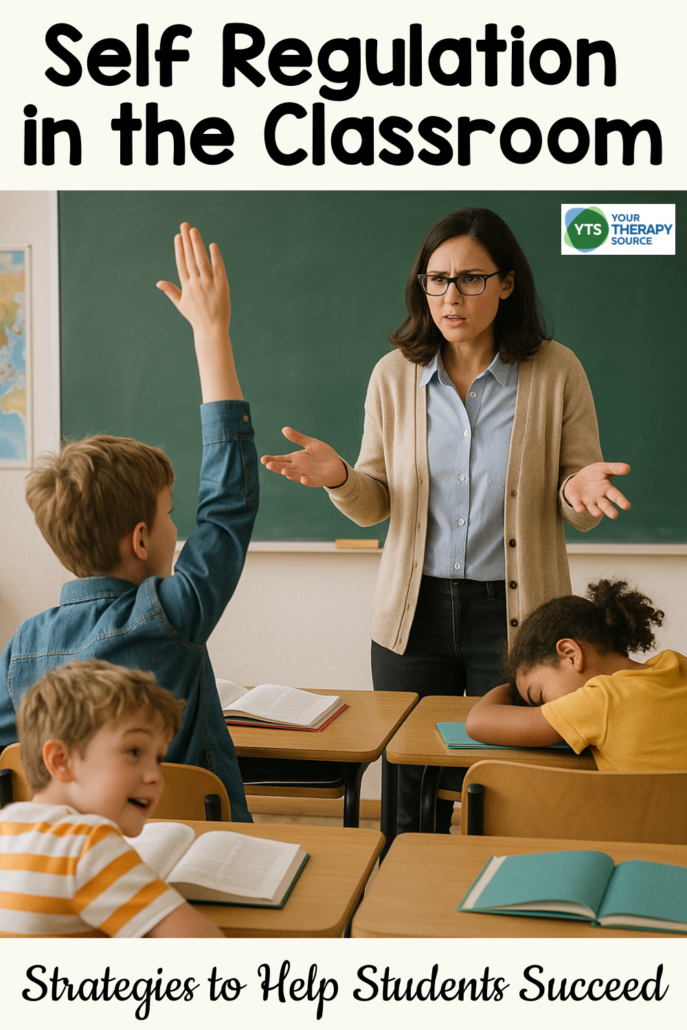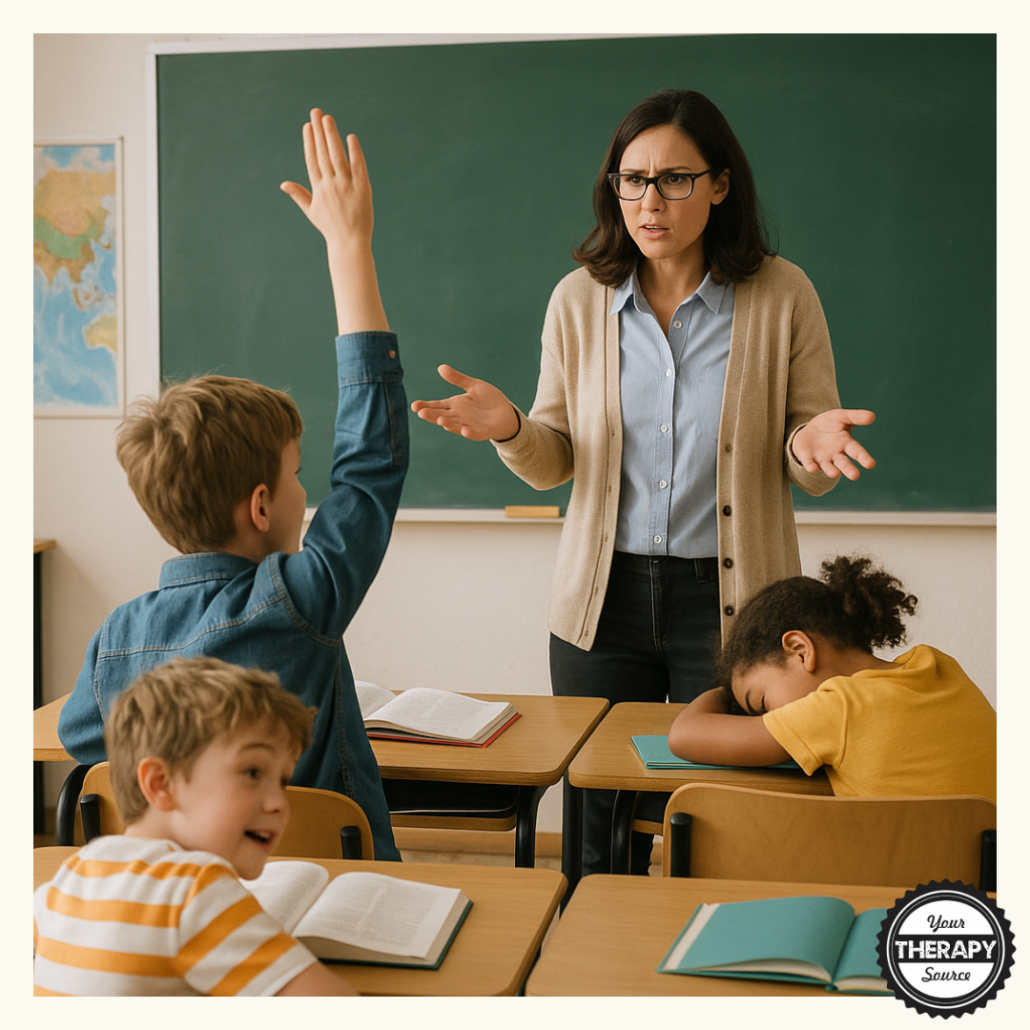Self Regulation in the Classroom
If you’ve ever worked with children, or just been around them long enough, you know what self regulation (or the lack of it) looks like. The student who can’t focus, who crumbles during schedule changes, or who freezes up when a task gets complicated? All of these point back to one critical skill: self regulation in the classroom. Learn more about why self regulation matters and how you can support it in the classroom.

What Is Self Regulation?
Self regulation is a person’s ability to manage their thoughts, feelings, and behaviors in response to what’s happening around them. For students, this shows up in countless ways: staying on task, handling frustration, working through transitions, or resolving conflicts.
It’s not a fixed trait. Self regulation can be taught, modeled, and strengthened over time. That’s good news for educators, because it means there are practical strategies to help students build this skill.
Foundational Supports in the Classroom
Before you introduce specific techniques, a few essential foundations need to be in place:
1. Strong Relationships
Students thrive when they feel safe, seen, and supported. Positive teacher-student relationships increase a child’s willingness to take risks, reflect on behavior, and accept guidance.
2. Predictable Routines and Structure
A consistent schedule, clear transitions, and advance notice of changes help reduce anxiety and increase student focus. This includes:
- Routines for entering the room, handing in work, transitioning
- Clear expectations for behavior
- Prepping students for changes ahead of time
3. Thoughtful Physical Space
An organized, calm environment helps students focus. Keep materials accessible, reduce visual clutter, and offer a quieter area for focused work when possible.
Listen to the Podcast
Teaching Emotional Awareness
Self regulation starts with recognizing and understanding emotions. Here’s how to build emotional awareness in your classroom:
- Daily Check-Ins – Use a mood chart or simple “how are you feeling today?” routines.
- Name and Validate Feelings – Teach emotional vocabulary beyond “mad” or “sad.” Use tools like feeling word lists or emotion wheels.
- Model Validation – Say things like, “It’s okay to feel upset,” or “I understand why you feel disappointed.”
Coping Skills and Regulation Strategies
Once kids can identify emotions, they need strategies to manage them. Many kids won’t develop these without explicit instruction. Try:
- Mindful Breathing – Inhale for 4, hold, exhale for 6. Place a hand on the belly to feel the breath.
- Positive Self-Talk – Replace thoughts like “I’m bad at this” with “I can give it a try.”
- Physical Strategies – Quick stretch breaks, yoga, dance, or calming sensory activities like mindful coloring.
- Calm Down Corners – A welcoming, non-punitive space with fidgets, visuals, and journals for self-regulation.
Cognitive Tools and Metacognition
Regulating emotions is just part of the puzzle. Kids also need tools to plan, reflect, and manage their behavior:
- Think-Alouds – Narrate your own internal monologue to model planning and decision-making.
- Basic Brain Science – Teach a simple model of the brain (thinking vs. feeling brain) to explain reactions and empower change.
- Collaborative Problem Solving – When challenges arise, ask reflective questions instead of fixing everything: “What happened? What can we try next time?”
- Goal Setting – Let students set small, specific goals like “I will use my breathing card when I’m frustrated.” Check out these self-regulation IEP goals for ideas.
- Self-Monitoring Tools – Charts and checklists help kids reflect on whether they’re meeting their goals or using their strategies.
Physical Supports and Daily Routines
Everyday routines can either support or derail self regulation. Help students by:
- Rehearsing Transitions – Use timers, music, or games to signal transitions and reduce resistance.
- Building Organization Time – Make desk clean-up and backpack checks part of the daily flow.
- Offering Movement Breaks – Incorporate physical or sensory breaks to help students reset and refocus.
- Using Calming Sounds – Soft music or chimes can signal a shift and promote calm.
- Playing Games – Games like Simon Says, Freeze Dance, or Jenga build impulse control and patience. Explore more games to practice self-regulation.
- Adding Visual Supports – Picture schedules, rule posters, and hand signals reinforce routines without adding extra verbal prompts.
Teacher as a Role Model and Coach
Your role is more than delivering lessons or teaching new skills, you’re also modeling regulation:
- Model Self Regulation – Narrate your own thought process and demonstrate calm behavior.
- Give Constructive Feedback – Praise effort, not just outcomes. Use non-verbal cues for redirection.
- Use Tiered Support – Offer more targeted help to students who need it most, including one-on-one conversations and customized supports.
- Provide Voice and Choice – Let students choose how they approach tasks or regulate during free time. Autonomy builds buy-in and engagement.
Self regulation isn’t a one-time lesson. It’s a daily practice woven into the classroom environment. It grows when students feel safe, supported, and empowered. Just like reading or math, it’s a skill that takes explicit teaching, consistent modeling, and ongoing practice. So the next time a student melts down or checks out, take a moment to reflect. Are we focusing on behavior as something to control or are we equipping them with the tools to manage it themselves?



